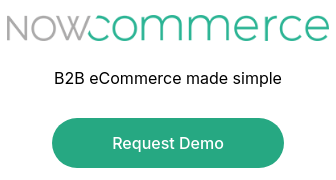Back office and front office operations are often performed by one key individual in small companies. The same person may do sales, customer service, purchasing, and accounting. They probably supervise shipping and water the plants, too! Even though one person or a small team does almost everything, it can help to plan for growth and departmentalize the different functions that they perform. Getting the most out of your QuickBooks accounting software, carefully selecting QuickBooks add-on software, and creative outsourcing can really ease the burden on your key person.
Here are five specific ways small wholesalers can make daily life easier and plan for growth.
 Use the Correct QuickBooks Transactions
Use the Correct QuickBooks Transactions
Select the "Home" button in QuickBooks, and you'll be greeted by the renowned order flow diagram. This visual guide offers a variety of transaction types, each designed for a specific function. It's essential to research these options to ensure you're utilizing the right transaction for your needs. For comprehensive learning, YouTube provides a wealth of QuickBooks training videos covering a broad spectrum of topics.
Employing the correct transaction for each task not only keeps you organized but also enables you to manage your business effectively using QuickBooks reports. For wholesale orders, Sales Orders are ideal as they serve as a reminder to ship and offer several insightful reports to help you oversee your customer backlog, manage backorders, and enhance your supply chain planning. Invoices play a dual role by reducing QuickBooks inventory for shipped items and generating receivables. Receiving Payments then completes the cycle by closing the invoice and the receivable. For shopping cart orders, Sales Receipts are optimal as they simultaneously recognize revenue and decrease inventory.
Use QuickBooks to Manage Inventory
QuickBooks excels at inventory management when you consistently use the appropriate transactions. Start by creating a Purchase Order when acquiring products from suppliers. To increase inventory, utilize the Receive Inventory transaction to close the PO. Invoices and Sales Receipts should only be employed once products are shipped, as they decrease inventory. Ensure you adjust inventory for samples or damaged products using the Refunds and Credits function to manage returns effectively. Delve into these functions to fully grasp their capabilities, and consider testing them in QuickBooks with a sample item and customer to enhance your understanding.
Add an Online Order Management System
Enhance your self-service capabilities by implementing an online order management system seamlessly integrated with QuickBooks. This innovative online sales portal empowers customers and representatives to independently place orders, alleviating the workload of your dedicated team member. With 24/7 access, customers and reps can also resolve their own service inquiries. The integration ensures that setting up and using this system is straightforward, enabling your team to focus their expertise on solving complex challenges and driving business growth, rather than handling tasks that technology can efficiently manage.
Outsource Payroll and HR Operations
Managing payroll and human resources can be a daunting task, often requiring specialized knowledge and expertise. By entrusting these responsibilities to professionals, you can significantly ease the burden on your small team. These areas are not only complex but also subject to stringent regulations, making them challenging for those without specific training. Mistakes can be costly, and with varying laws and taxes across states, a deep understanding is essential. Outsourcing these critical functions is often the most practical solution to ensure accuracy and compliance, allowing your team to focus on what they do best.
Outsource Your Warehouse Operations
Managing your own warehousing and shipping might initially seem like a smart way to keep control, but these operations are often space and capital-intensive, challenging to scale, and may not be as efficient as anticipated. Consider partnering with a third-party logistics provider (3PL) for your product fulfillment needs. Finding a warehouse that aligns with your port of entry, customer base, or office location, and suits your product type and volume, should be straightforward. By integrating your QuickBooks with their software, you ensure precise and efficient communication with your 3PL.
Hiring additional staff can be a significant step for a small business and might not always be feasible. Instead, focus on enhancing the efficiency and satisfaction of your current team. You can navigate growing pains by optimizing existing tools, incorporating an online order management system with QuickBooks, and outsourcing specific functions.

